Episode 81 Show Notes
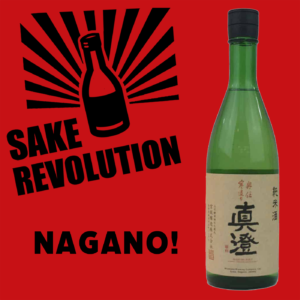 Episode 81. This week, let’s peruse another prefecture and visit what’s known as the “Roof of Japan”, the mountainous, landlocked and high altitude Nagano Prefecture. This prefecture is most widely known as the host of the 1998 Winter Olympics but it is also famous for its photogenic snow monkeys that love to warm up in the onsen hot springs in winter. The many towering mountain chains of Nagano provide snow melt water to much of the region and because of this, Nagano has the second highest number of sake breweries of any prefecture. John and Timothy sample a sake from a quintessential brand of Nagano: Masumi, and they explore their flagship, the Masumi Okuden Kantsukuri Junmai. The guys really dig deep and “talk turkey” about this brew. Join us for another virtual outing to a sake-centric prefecture as we explore and sip our way through Nagano!
Episode 81. This week, let’s peruse another prefecture and visit what’s known as the “Roof of Japan”, the mountainous, landlocked and high altitude Nagano Prefecture. This prefecture is most widely known as the host of the 1998 Winter Olympics but it is also famous for its photogenic snow monkeys that love to warm up in the onsen hot springs in winter. The many towering mountain chains of Nagano provide snow melt water to much of the region and because of this, Nagano has the second highest number of sake breweries of any prefecture. John and Timothy sample a sake from a quintessential brand of Nagano: Masumi, and they explore their flagship, the Masumi Okuden Kantsukuri Junmai. The guys really dig deep and “talk turkey” about this brew. Join us for another virtual outing to a sake-centric prefecture as we explore and sip our way through Nagano!
Skip to: 00:19 Hosts Welcome and Introduction
Welcome to the show from John and Timothy
Skip to: 03:14 Sake Spotlight: Nagano
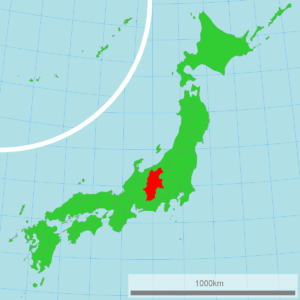
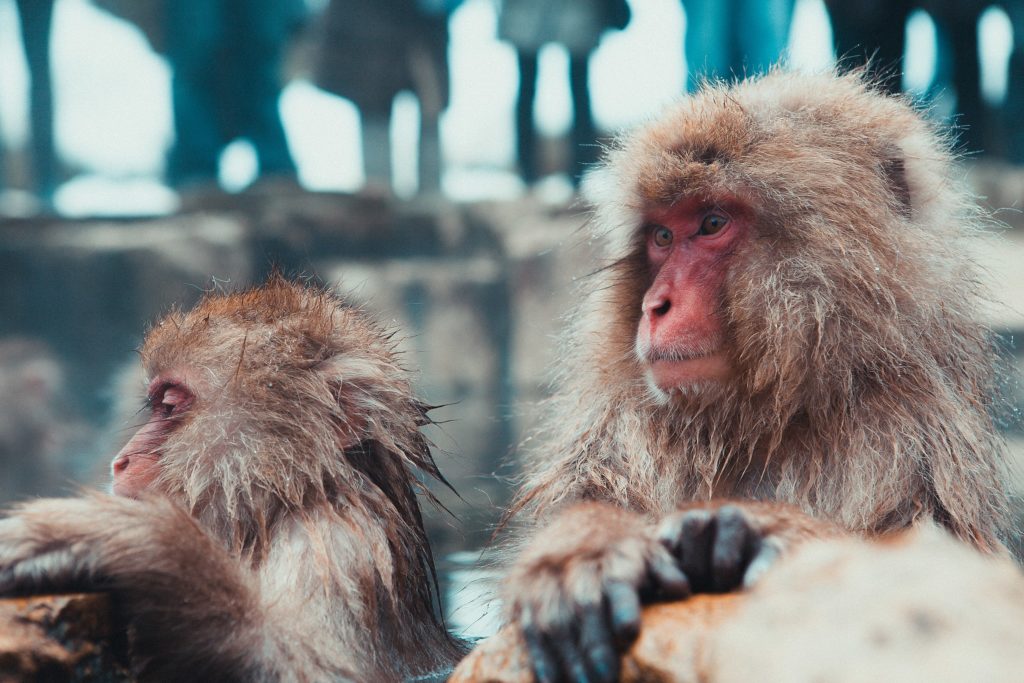
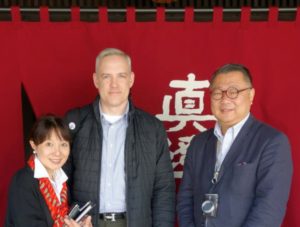
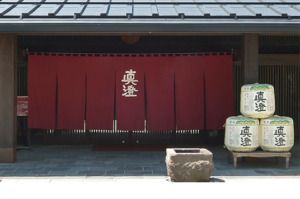
Miyasaka Jozo
Address: 1-16 Motomachi Suwa, Nagano-ken 392-0006. Japan
Masumi Instagram: https://www.instagram.com/masumi_sake
Masumi Facebook: https://www.facebook.com/sakemasumi/
Masumi Website: https://www.masumi.co.jp/en/
Masumi Youtube: https://www.youtube.com/channel/UCas4KKCG9pPysQL7-kKBp6g/
Skip to: 20:52 Sake Introduction and Tasting: Masumi Okuden Kantsukuri Junmai
Masumi Okuden Kantsukuri Junmai
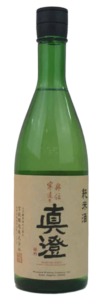
Brewery: Miyasaka Jozo
Classification: Junmai
Alcohol: 15.0%
Prefecture: Nagano
Rice Type: Hitogokochi, Miyamanishiki
Seimaibuai: 70%
SMV: +3.0
View on UrbanSake.com: Masumi Okuden Kantsukuri Junmai
NOTE: Use Discount Code “REVOLUTION” for 10% off your first order with Tippsy Sake.
Skip to: 32:10 Show Closing
This is it! Join us next time for another episode of Sake Revolution!
Announcing Patreon
 Now there is a new way to support Sake Revolution. Join us on Patreon! Patreon is an online platform that allows you to support your favorite creators by subscribing to a monthly membership. At Sake Revolution, we’re offering two tiers, each with its own perk. If you enjoy our sake podcast, if you are able, please consider supporting this labor of sake love! See below to learn about our Patreon support levels.
Now there is a new way to support Sake Revolution. Join us on Patreon! Patreon is an online platform that allows you to support your favorite creators by subscribing to a monthly membership. At Sake Revolution, we’re offering two tiers, each with its own perk. If you enjoy our sake podcast, if you are able, please consider supporting this labor of sake love! See below to learn about our Patreon support levels.
-
Sake Enthusiast
Have you ever wanted to sip along with us as we taste our sakes on the podcast? Now you can! As a Sake Enthusiast patron, you’ll get the inside track and know in advance which sakes we’ll be featuring on the show. This allows you to get them on hand and sip along with us while you listen.
-
Sake Otaku
As a Sake Otaku supporter of the pod, you’ll get access to all the Sake Enthusiast intel along with access to a monthly live zoom Sake Happy Hour taking place the first Weds of every month at 9pm ET (6pm PT). Visit with us live on zoom! Come with all your questions and suggestions and enjoy a relaxed and fun Happy Hour with with us as we all sip sake together!
Episode 81 Transcript
John Puma: 0:21
Hello, everybody. And welcome to Sake Revolution. This is America’s first sake podcast. I’m your host, John Puma from the Sake Notes. I’m the administrator over the internet sake discord. And I’m, I’m a local sake nerd.
Timothy Sullivan: 0:36
No argument here. And, and I am your host Timothy Sullivan. I am a Sake Samurai, sake educator, as well as the founder of the Urban Sake website. And every week, John and I will be here tasting and chatting about all things, sake and doing our best to make it fun and easy to understand. Yeah. So, so, John, what, what have you been up to this week? Have you had any sake adventures out there in the world?
John Puma: 1:04
Um, I’ve been, I’ve got a situation right now where I have my fridge has a lot of sake.
Timothy Sullivan: 1:08
Oh, that’s a good situation to be in.
John Puma: 1:10
Yeah, so yeah, it is, it is a good situation. So I’m trying to have as many sake adventures in. the house as I can to try and pare down the, uh, the existing stock.
Timothy Sullivan: 1:22
you, if you need any help, paring down, just give me a ring. Give me a call. I’ll come over.
John Puma: 1:27
Come on down Timothy’s Sullivan will. Well, I will show you the couch I do my sipping,
Timothy Sullivan: 1:34
Yes. The famous couch.
John Puma: 1:36
the famous couch, there’s a certain amount of reclining that, needs to happen for optimal sipping. I have found, and it’s a, it’s a lot of fun. It’s a lot
Timothy Sullivan: 1:46
that sounds wonderful.
John Puma: 1:47
you know, it’s a see the, the dedicated, uh, the Puma sake fridge, uh, Myshell likes to call it the party fridge.
Timothy Sullivan: 1:55
That’s great.
John Puma: 1:55
Take from that with your will. How about you?
Timothy Sullivan: 1:59
Uh, well fall is creeping in and it is getting colder every day and I am loving it. I am ready to look at the leaves, change color, and have some warm sake and put my sweater and my scarf on. I just, I love the autumn. It’s my favorite season. So I’m really happy this time of year.
John Puma: 2:23
Yeah. I like the autumn as well. Uh, because I kinda like, I don’t know, like the brisk air, it’s kind of nice. It’s comfortable put a coat on it’s it’s it’s fun. It sounds good. I know a lot of people get a little, they, they miss, they already start missing the summertime, but I’m Now I like spring and fall. Those are my seasons.
Timothy Sullivan: 2:40
same here. All right. Well, we can. Talk about the cold temperatures. And that makes me think of one Prefecture in particular. Uh, we’ve talked about a few prefectures and what their sake specialties are, but I thought it might be fun today to take another look, uh, do a profile of a Prefecture. And this is an interesting one. It is a landlocked Prefecture. That means no access to the ocean on any side.
John Puma: 3:13
I didn’t know they had those
Timothy Sullivan: 3:14
They do. Yes. And we are talking about Nagano Prefecture.
John Puma: 3:20
Yeah. By the way, for the record. Yes. I do know there are landlocked prefectures in Japan. Don’t write in about that.
Timothy Sullivan: 3:26
So I think Nagano when any American hears the word Nagano, there’s probably one thing they’re going to think of, right?
John Puma: 3:34
Yes. the
Timothy Sullivan: 3:35
the Olympic.
John Puma: 3:37
Yes.
Timothy Sullivan: 3:38
1998 winter Olympics were in Nagano and I was just a small child back then. So I barely remember it was not true.
John Puma: 3:51
I’m not sure. I actually barely remember because I was a little young
Timothy Sullivan: 3:56
don’t.
John Puma: 3:57
Also not overwhelmingly interested in the winter Olympics back when I was 10 or whatever it was, however old I was.
Timothy Sullivan: 4:04
I think the same with me. I don’t think I was that interested in the winter Olympics, but it is a big deal when it happens and Nagano is still famous to this day for hosting the 98 winter Olympics. And there’s, there’s a few other things about Nagano that are, I think people would know if they saw the picture. Um, have you ever heard of the snow monkeys that go in the onsen?
John Puma: 4:32
Oh, that’s like, that was a, when we were researching, going to Japan for the first time ever, that was like the one of the first like, wait, can we do that? And you know, in real life, I find I don’t, I would not want to do that. That seems a little terrifying to me too. I don’t know. I don’t want to go and see wildlife that is not. You know, that’s free to roam and it’ll bother them while they’re having it while they’re having a bath. That just seems rude.
Timothy Sullivan: 4:59
for our listeners who may not have seen, you can check out the show notes for the pictures of the famous snow monkeys, but there is a park in Nagano that has a natural hot spring or an onsen. And the macaque monkeys, which is, I think the largest monkey in Japan, they climb down the mountain and they get into the onsen and they kind of relax there. And it’s a very famous picture that they use for tourism. As you said,
John Puma: 5:24
yes, it is also these monkeys look like absolute legends. They are just they’re landing. They’re just like hanging out. They’re having the time of their lives. You kind of get jealous. You’re like, man, when I relax, I am not as relaxed as these monkeys.
Timothy Sullivan: 5:41
Yeah, but you know what I heard that kind of destroyed it for me forever. There, there is a very strict pecking order in macaque society. So there’s only a certain class of monkey in the group that is allowed to get the onsen. So if you’re a lower ranking monkey in the pecking order, you have to shiver off to the side and it’s like not equitable or fair at all. It is survival of the fittest and it is not. A good way to run the onsen. I don’t think
John Puma: 6:15
Well remember, remember Tim and Starfleet. We have to respect the
Timothy Sullivan: 6:19
I
John Puma: 6:19
of other races.
Timothy Sullivan: 6:21
it’s the prime directive in Nagano I know, but yeah, from, from
John Puma: 6:26
So, so wait, so when I, when I called them, like absolute legends for being in the pool was literally like the best of the best I get to be in the pool.
Timothy Sullivan: 6:33
well, it’s the, it’s the. Dominant monkeys get to be in the pool and the, the monkeys that aren’t in charge of the pack. They, they have to shiver on the side. So I always, I always feel sorry for those little monkeys on the side, I guess, I guess I identify with the underdog.
John Puma: 6:50
Yeah. well, Yeah. they should just go and make their own
Timothy Sullivan: 6:53
Yeah. So I’ve never been to see the snow monkeys in Nagano and I think, I think I’ll be fine if I, if I skip that on my next trip to
John Puma: 7:01
Yeah. I think so too. You don’t, you don’t want to, you don’t want to be in big monkeys pocket. You want to go and find the, uh, fine. You gotta find the, um, the underdog monkeys, uh, someplace else, and then visit
Timothy Sullivan: 7:15
yes.
John Puma: 7:16
wherever they may be. The equitable
Timothy Sullivan: 7:19
Right. So Nagano is famous for the Olympics and it’s famous for the snow monkey park. And it’s also called the roof of Japan. Have you ever heard.
John Puma: 7:31
I have never in my life, heard the term roof of Japan. I’ve heard kitchen of Japan. Uh, that’s a sake. I’ve never heard of roof of Japan. Why is it the roof of
Timothy Sullivan: 7:40
Well, it has three mountain ranges that are 10,000 feet tall. there is a wide range of mountains. There’s the Hida mountains, the Kiso mountain. And the Akaishi mountains, and they have peaks that are up to 10,000 feet tall. It’s about 3000 meters and these are some of the highest elevations in the country. And this is why Nagano is referred to as the roof of Japan. But there’s a side-effect of all these mountains and that is, they get snowed on and. In the warmer months that all melts, so not gonna know is also super famous for the quality of its water and at the foot of all these different mountains in the valleys and the Plains, they have tremendous water quality, which of course is good for us. And all of our interest in sake.
John Puma: 8:39
Um, yes, we do love mountain runoff water. Whenever we talk about sake and we talk about where water comes from that’s always a, a, a big plus. I was like, oh, are there mountains nearby?
Timothy Sullivan: 8:51
Yeah, definitely. And there’s a lot of mountains in Japan. So. I did some research and I looked up what the most famous food from Nagano is. Do you have any idea what it might be?
John Puma: 9:01
Um, well, it’s really cold there and mountainous. So I’m going to guess it is some sort of a strange mountain vegetable that I’m not familiar with, that you, that is very warm.
Timothy Sullivan: 9:13
That’s a good guess. And you can incorporate mountain vegetables into this dish, but soba noodles are actually the most famous food. Nagano according to my research,
John Puma: 9:27
I am
Timothy Sullivan: 9:28
every article I looked up, what’s the best, most famous food from Nagano and everyone started with soba. And I think there’s a soba where they take those mountain vegetables and they tempura them. They fry them and you have those with your soba, but I love do you like soba?
John Puma: 9:44
Oh, I am I a big soba fan?
Timothy Sullivan: 9:47
That is good as am I? Yeah. And so, but it’s good for you too. It’s a buckwheat noodle and it’s really healthy.
John Puma: 9:57
Yeah. Yeah. How do you like your soba?
Timothy Sullivan: 10:00
I, you know, I’m one of those people who drinks, iced coffee all year round and I like cold soba.
John Puma: 10:07
Really? Wow. Well, um, I’m the opposite. I will have hot soup. Like a kakiage soba at kake soba, like in the middle of the summer. I don’t care. I’m inside. I’m gonna, you know, I’m protected from the elements. I want my soba
Timothy Sullivan: 10:26
Yeah, I am exactly the opposite. Now I’m finding I’m the yin to your yang Puma. Now we know why
John Puma: 10:35
except for our whole Yamagata thing. That’s
Timothy Sullivan: 10:38
it’s the, uh, iced coffee versus hot coffee. Now we know.
John Puma: 10:43
I like iced coffee too. I just, also
Timothy Sullivan: 10:47
you just don’t, you don’t drink it in the end of January. Like I do.
John Puma: 10:51
Did you? It is, it was 41 degrees and I woke up this morning. Did you have a nice
Timothy Sullivan: 10:55
I had a big iced coffee this morning. Yup.
John Puma: 11:00
All right. That, that settles it. Uh, and you would have had cold soba with it. Okay.
Timothy Sullivan: 11:06
I was in Nagano I’d be having cold soba right now.
John Puma: 11:10
Excellent. Excellent. Excellent. So, so what else did I have over there? We’ve got, we’ve got the Olympics back in 1998. and, and, uh, for the record guys, I was not like 10 years old. I tend to, it was more like closer to 20. we have a snow monkeys who may or may not be assholes
Timothy Sullivan: 11:29
No. There’s no question about it. They are.
John Puma: 11:34
and we’ve got soba. amazing water.
Timothy Sullivan: 11:37
Well, let’s talk about sake now.
John Puma: 11:41
All
Timothy Sullivan: 11:41
Yeah. So now that we’ve whet your appetite for all things, Nagano, this is something that may shock you not gonna know has 79 sake breweries.
John Puma: 11:53
seriously.
Timothy Sullivan: 11:54
Yes, it is the second most breweries have any Prefecture. And of course, John, you know what? Number one is.
John Puma: 12:03
and Niigata
Timothy Sullivan: 12:04
That’s right. You gotta at approximately 90 breweries and Nagano comes in. Number two in number of sake breweries 79. That’s a lot. Yeah.
John Puma: 12:16
I had literally no idea.
Timothy Sullivan: 12:19
Yeah.
John Puma: 12:21
got Nagano. So all of these, all of those mountains and all of that runoff, you put the brewery where the water is Tim,. That’s what they always say.
Timothy Sullivan: 12:31
That is what they say.
John Puma: 12:33
Wow.
Timothy Sullivan: 12:34
Yes, 79 breweries. And there are other Prefecture that are really well known for sake. Of course, you mentioned a few of them just a moment ago, but Nagano is a little bit of, I think the underdog for being really well known for premium sake, you know, A few brands that I think are really well-known outside of Japan from Nagano. And one that we’ve tasted on the show before is Kurosawa.
John Puma: 13:09
Yes.
Timothy Sullivan: 13:10
really famous,Tokubetsu junmai
John Puma: 13:13
Yes. I want to say that in the United States, Kurosawa is one of those sakes that you can get at a lot of stores that don’t have large sake selections. If they’ve got a few different varieties of sake, there’s a really good chance that the Kurosawa will be one.
Timothy Sullivan: 13:31
Yeah. And it’s been exported for a long time. Like that was around long before you and I got started drinking sake here in the states. So, um, that is a really well-known brand from Nagano and another brand is Maihime. so that’s another brand that has exported
John Puma: 13:49
Yeah. I do want to say though, the idea that there’s 79 breweries that I’ve never heard of, that might be really small, like mom and pop style. Breweries in Nagano it really makes me want to go to Nagano and explore. Just seems like a, like, like I would break my one brewery per trip rule for this concept. I don’t know.
Timothy Sullivan: 14:13
Yeah. It it’s, it’s so interesting. And. We’ve talked about so many other prefectures with all our different sake that we’ve tasted. And I think that Nagano again, is, is the underdog and maybe a really good Prefecture to dig into a little bit more.
John Puma: 14:32
And so there is one, one big guy over here.
Timothy Sullivan: 14:36
Yes. There’s one brand. It has been exporting for a long time. Really well distributed and super well-known from Nagano
John Puma: 14:45
Yes there is. and that is, uh, Miyasaka Jozo, but in, in the United States, we know them for making one particular brand and Tim, what does that brand?
Timothy Sullivan: 14:56
That is Masumi. Masumi is a really well-known brand in the U S and it is a fabulous brewery. let’s talk a little bit about, uh, Miyasaka Jozo. So this is a brewery that I’ve had the good fortune to visit a few times, and it was founded in 1662.
John Puma: 15:19
wow.
Timothy Sullivan: 15:20
So another really old brewery
John Puma: 15:24
Yeah.
Timothy Sullivan: 15:24
and they have two facilities. So the original brewery building is called the SUWA brewery. And Suwa is the name of the town where the brewery is, and there’s also a beautiful lake there. And when you visit lake Suwa. On a clear day, you can see the top of Mount Fuji across the lake. It is one of the most gorgeous views in Japan. You have to have perfect, perfect weather to see that, but it is like a clear shot, right? To Mount Fuji from the banks of SUWA lake. Really beautiful.
John Puma: 16:00
Have you ever had the privilege?
Timothy Sullivan: 16:01
I’ve seen it in pictures only. I’ve been to the spot where you’re supposed to see it, but it’s been cloudy the times I’ve gone there and just not, not clear enough. And the other facility that Masumi has is known as the Fujimi brewery and that is in the mountains. So we talked about the mountains of. Nagano and this brewery, the Fujimi facility is the highest elevation brewery in Japan.
John Puma: 16:31
really?
Timothy Sullivan: 16:31
Yeah, it is at 3,200 feet.
John Puma: 16:39
Ooh.
Timothy Sullivan: 16:40
That is high up.
John Puma: 16:42
And it’s up. there. It’s you get some high altitude training when you work in their koji room?
Timothy Sullivan: 16:45
Yeah. So the, the S the suwa brewery was built in 1662, and the Fujimi brewery in the mountains was built in 1982.
John Puma: 16:54
Oh, wow. So it’s a a babe.
Timothy Sullivan: 16:59
Yeah. So we’re going to be tasting a sake from the Masumi brand today. And I want to give a shout out to the wonderful folks at Masumi. We have the president’s, uh,Naotaka Miyasaka, and his lovely wife, Kumi and Kumi runs the gift shop at the brewery. And it is one of the most beautiful. Curated shops that I’ve ever been to. So if you’re looking for high-end glassware and all types of sake accoutrement to go with your Masumi when you buy it, it is very elegant and very beautiful. She does a wonderful job with that, with that
John Puma: 17:42
I love that we got a glassware plug in there.
Timothy Sullivan: 17:46
And then also at the brewery is the. Mr. Miyasaka’s, son Katsuhiko Miyasaka. So he’s the next generation president. And he’s been working at the brewery And then there’s also our buddy Keith Norum, who is the overseas sales manager for Miyasaka Jozo and he’s an American guy who’s been living in Nagano for years. And I remember meeting him when I was first getting into sake. I met him at a restaurant event here in the states and I was like, oh wow. You know what this guy does is amazing. So Keith has been at this for a long time and he is a wonderful ambassador for Nagano sake overseas. So that’s the team we’re dealing with. They’re all fantastic people and their brewery is so special. Um, they’ve made a wonderful sake that they’ve gone to great lengths to export. So we get to enjoy it because of all their hard labor. So I’m so grateful.
John Puma: 18:42
That’s great. Now, I guess, apart from having two, count them two breweries over in Nagano and exporting a very large amount of sake, uh, and having wonderful glassware in their gift shop. what else is Miyasaka Jozo known for?
Timothy Sullivan: 19:00
Well, they are known for producing. High-quality craft sake. Absolutely. And their brand name is Masumi. And what does that mean? Well, Masumi is often translated as the mirror of truth. So there is a mirror that is 1100 years old. It’s an ancient artifact in the Suwa. Teisha Shinto shrine. So the local Shinto shrine in Suwa city has this 1100 year old metal mirror. That is one of their treasures. And. The Masumi company has been donating sakess to the Suwa shrine for generations and generations. So they got permission to use the name of the mirror, the local treasure for their sake. So Masumi no Kagomi is the mirror of Masumi and that means truth or transparency. So the brand name comes from this mirror, local treasure of their town, and it means mirror of.
John Puma: 20:12
Hmm. So I had always known that, uh, Masami was the mirror of. truth, but I didn’t know There was an actual mirror. I know there was a literal, actual device that reflected things that exists in this town. That’s very
Timothy Sullivan: 20:26
Yeah. So it’s on display at a local museum. So you can actually go look in the mirror of truth. But when I first heard this name, I thought it was like, oh, in Vino Veritas, you know, like if you drink enough, Masumi, you’ll look in the mirror. Tell the truth. What do you
John Puma: 20:44
I like it. I like it a lot. This, this mirror of truth, Tim, we, we have some, do we not?
Timothy Sullivan: 20:52
we do, we brought some Masumi sake. John, do you want to introduce us to the particular sake we picked up for today?
John Puma: 21:02
Sure. Sure. So this is the Masumi, okuden Kantsukuri.
Timothy Sullivan: 21:11
Kantsukuri is a way that refers to sake. That’s brewed at cold temperatures kind of in the winter months.
John Puma: 21:18
the rice type of this Junmai is Hitogokochi and also Miyamanishiki we’ve talked about me. I’m going to show you before, but I think this is might be the first time I’ve uttered Hitogokochi before I hope I got it right guys. And, uh, the milling percentage is 70. So that’s. Prime Junmai the sake meter value. The, a rating of that dry to sweet is plus three. So again, just, just a bit to tick higher than neutral. Um, and we normally don’t talk about yeast too much here, but in this particular case, I think it’s very important that we mentioned that this sake uses yeast number seven. Now, Tim, why is This
Timothy Sullivan: 22:09
This is a huge, huge, big deal. So Masumi the Miyasak Jozo is known as the discovery place of yeast number seven. So. When yeasts were first being isolated and used for producing sake, they started numbering them. So the brewing society of Japan would kind of put a number on each yeast that. Doing well, and they would distribute it. And in 1946, Masumi won all the top awards for the national sake appraisal and all the regional contests. And there were scientists at the brewing society of Japan who were like, what’s going on at Masumi. Their sake is like off the hook this year. And they went there and they, they isolated, uh, new yeast variety. At the brewery and they ended up releasing it to the country, to all the brewers and they called it yeast number seven. And this yeast, it was literally a game changer in the world of sake. So one thing that Masumi is super famous for, is it the site of discovery for this yeast number seven, they started to introduce those Ginzo aromas to sake in a very prominent way. And it is still used today. Very widely in Japan. So east number seven is one of the seminal yeast used in the world of sake. And it, it comes from Masumi.
John Puma: 23:40
Interesting. All right.
Timothy Sullivan: 23:43
Yeah. one thing that the president Mr. Miyasaka told me is that he often hears that people assume that. yeast. Number seven is something that he can sell and that he has a patent for. And he rakes in all this money from Yeast number seven, but that is not true. he was speaking at an event in New York and I was listening to him. He said, he said, if, I was selling east number seven, all these years, I could have flown to New York today on a private jet. That’s not the. So, the yeast was taken and distributed to all the brewers. So it’s not something that they own or control in any way, but they are very proud that they were the source of discovery for yeast number seven.
John Puma: 24:25
All those, all those suite number seven residuals that he’s been denied.
Timothy Sullivan: 24:31
Yeah. So this, I think that this. Masumi okuden Junmai. I have heard this referred to as one of the flagship sakes of Masumi, it’s their, one of their standard Junmais, one of the fundamental sakes of their brewery that really defines their flavor and their taste. So I’m super excited to get into this and taste.
John Puma: 24:54
great. I like that. When we’re doing an episode on Nagano, we’re getting one of the flagship sake. From one of the largestbreweries in Nagano. that’s nice. All right. So I’m going to be ready to open
Timothy Sullivan: 25:05
Yes, let’s do it.
John Puma: 25:06
Let’s do it.
Timothy Sullivan: 25:11
That was quite a pop.
John Puma: 25:18
So, what do you think
Timothy Sullivan: 25:19
It looks nice and clear in the glass.
John Puma: 25:22
I’m getting a slight amount of yellowy? Very, very slight, but it is clear though. There’s no. haze, is there anything to it?
Timothy Sullivan: 25:32
All right, let’s give it a smell. Um, there’s kind of a mochi rice aroma, I would say it’s, uh, definitely rice-y but soft. Um, it’s an interesting aroma don’t you think?
John Puma: 25:49
Yeah. it’s definitely rice-y, but there is a, uh, almost a S a slightly candied quality to some of what I’m getting on the nose. and it’s, it doesn’t make any sense to say candied rice, but there’s a little bit of like, almost like a sweetness
Timothy Sullivan: 26:05
Um, yeah. And mochi is one of those sweeter sweeter rices, you know, use often for dessert things. So that’s why I was thinking like right about mochi rice, that sweeter style kind of soft and chewy, um, but really lovely aroma. And it’s pretty restrained as well. Right. It’s not super strong or super, uh, effusive in, in the aromatics.
John Puma: 26:31
Not at all. No.
Timothy Sullivan: 26:33
Yeah, I agree with you. There’s something like a little bit of a preserved note or something, a little concentrated in the aroma, but primarily for me, it’s reading like a soft rice, maybe a little bit of preserved fruit, uh, but overall soft, gentle, lightly rice-y.
John Puma: 26:54
I’m leaning a little more. Like I’m getting almost something a little bit, almost earthy, but that might be the way I’m interpreting the rice.
Timothy Sullivan: 27:02
No, I totally understand what you’re saying. There’s a grounded-ness to this, to this aroma. It’s got a lot of dimension to it, but it’s soft and gentle. All right. Let’s give it a taste. Um,
John Puma: 27:19
Hello?
Timothy Sullivan: 27:20
that. Really interesting.
John Puma: 27:24
Yeah,
Timothy Sullivan: 27:24
The flavor is rich
John Puma: 27:27
huh?
Timothy Sullivan: 27:27
and smooth and yummy. It’s like really good. So, oh gosh, really good. What do you think?
John Puma: 27:39
I think the aroma made me think that it was going to be a lot more. Rice forward or a lot more dominant in its rice and earthiness that combined with perhaps that that’s 70% milling, but there is so much more to this. sake. Uh, and as soon as you taste it, you’re just like, whoa, there’s, there’s just a lot going on and, and in a good way,
Timothy Sullivan: 28:05
It has a, it has a thickness to it as well. Like there’s a, there’s a weight and a richness to the sake when it’s on your palate for.
John Puma: 28:14
There
Timothy Sullivan: 28:15
The aroma was a little bit soft and, and light a little rice-y, little earthy, like you said, that was a great description. And on the palate, it has a richness and it’s very smooth. Almost velvety.
John Puma: 28:30
rich and smooth at the same time. You usually don’t get. I think that when Satya is rich, it usually smoothness is not really what they’re thinking about. And then, uh, and here you have them kind of doing both. I kind of like it, this seems like it would be very versatile in the kitchen. And I think this would be a very virtual, a virtual, very versatile, uh, with temperature.
Timothy Sullivan: 28:58
oh yeah,
John Puma: 28:59
Yeah. What do you think? And warm this one up a little.
Timothy Sullivan: 29:03
I think you could definitely warm this one up.
John Puma: 29:05
Mr Mr. Ice coffee, man.
Timothy Sullivan: 29:09
Yeah. I mean, when it comes to my sakes, I am not in an ice ice, only on the rocks kind of person. I love warm sake. I am a huge fan of warm sake game, and I think this would be great warmed up. It would make the texture even more velvety for sure.
John Puma: 29:30
Um, yeah. What do you think about this finish?
Timothy Sullivan: 29:33
Hmm, for me, the finish lingers on my palate, when you have a dry Junmai sake, you know, from maybe from the Niigata or something like that, it can be very crisp and kind of clean on the finish. But for me, this has a richness to it that lingers and has a presence.
John Puma: 29:58
It does stick around a little bit long. Um, not, not in a bad way. I do like that. It’s there, but it is a very long tasting experience.
Timothy Sullivan: 30:07
Yeah.
John Puma: 30:09
It’s not just a sip and then you go through and then you’re done, no, this, this is lingering around and it’s going to have an influence on it’s going to have an influence on the next thing you eat. I think
Timothy Sullivan: 30:17
It’s got good presence. It’s got good weights, delicious flavor. And I’m going to make a bold statement.
John Puma: 30:25
I’m ready.
Timothy Sullivan: 30:25
This might be my Thanksgiving sake for 2021. What do you think about pairing this with Thanksgiving flavors?
John Puma: 30:34
I can do that. I think this will be, yeah, no. Cause like.
Timothy Sullivan: 30:37
your arm.
John Puma: 30:38
Nah, You inviting me over is that what’s going on?
Timothy Sullivan: 30:42
You have to bring the stuffing.
John Puma: 30:43
Uh, I was going to bring the sake. Um, I think this would work with like, I don’t know. This was some Turkey.
Timothy Sullivan: 30:51
Yeah, I think this would be great with Thanksgiving flavors. Like a sweet potatoes, mashed sweet potatoes.
John Puma: 30:59
Ooh. Mashed sweet potatoes. Wait
Timothy Sullivan: 31:02
oh, I love my mashed sweet potatoes. Yeah.
John Puma: 31:05
know if I’ve ever had mashed sweet potatoes before.
Timothy Sullivan: 31:07
missing out.
John Puma: 31:08
Uh, I’ve. I’ve warmed up to roasted sweet potatoes though. Uh, I was a hater.
Timothy Sullivan: 31:13
What
John Puma: 31:14
I was a sweet potato hater,
Timothy Sullivan: 31:15
I can’t believe it.
John Puma: 31:16
around. You should be very proud.
Timothy Sullivan: 31:18
Yes. Well, try mashing them because it’s one of my favorite Thanksgiving foods is the mashed potatoes. I love Turkey and gravy, of course, but if you think about cranberry sauce, that is like a dried, concentrated fruit. And I think we’re picking up on a little bit of that concentrated. Dried fruit flavor in this as well, along with the rice and the savoriness. Really, really good.
John Puma: 31:44
Ooh. All right.
Timothy Sullivan: 31:47
Yes. I think this is a sakes that would be good for warming. Good serve, chilled, even good room temperature. And in my mind first. Admittedly, I’m in a Thanksgiving frame of mind right now. It is the season, but I thought, wow, this would really pair well with all those flavors
John Puma: 32:08
that was a nice little adventure.
Timothy Sullivan: 32:10
was fun. All our listeners out there, you got to look into Nagano could be the sleeper sake, a Prefecture of 2021. So we want to get everyone drinking Nagano as much as possible. And if you have a chance, try this wonderful Masumi Okuden and it is delicious. Well, John, thank you so much for tasting with me. It’s fun as always. And I want to thank our listeners as well for tuning in. We really do hope that you’re enjoying our show. Now, if you would like to show your support for Sake Revolution, the best way to help us out right now would be to back us on Patreon. Patreon is, a service where you can sign up for a monthly subscription and that money goes to help producing our show. Editing website hosting and all the other costs that go into producing Sake Revolution.
John Puma: 33:03
And you can go ahead and do that over at Patreon.com/SakeRevolution. Now these are hard times and if contributing in that manner isn’t the best thing for you. Don’t worry about it just by listening. You are also supporting us. When you tell your friends about it. When you leave us a review on your podcast platform of choice, when you subscribe all of these things really help us out. Even the good vibes you send our way, we really do really do appreciate it. It makes us, it makes, uh, it makes getting up and doing this show every week. Uh, so worth it.
Timothy Sullivan: 33:40
And we really do appreciate all of our patrons, all of our listeners and all of the. Of you who helps spread the word and leave us reviews. So appreciative. So thank you so much. And as always, if you would like to learn more about any of the topics or any of the sakes we talked about in our episode today, be sure to visit our website,SakeRevolution.com, and there you can check out all the detailed show notes.
John Puma: 34:05
And if you’ve ever wondered where we come up with our episode ideas. We solicit a lot of them from emails that we receive at [email protected]. So when you’ve got questions, comments, ideas, we do listen and we do use them. so keep them coming with that. I want to tell you all to please raise a glass remember to keep drinking sake and Kanpai!